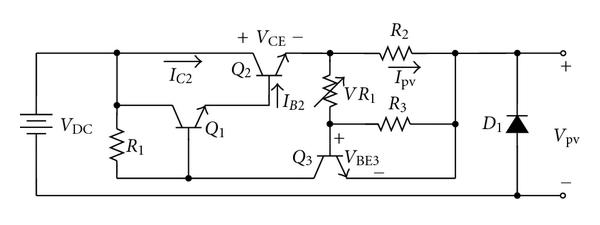This circuit is designed to provide 300Vdc with a I-V (current-voltage) characteristic curve that resemble the characteristic of a series of Photovoltaic panels. Changing a few components, it can provide “string voltages” of 600 Vdc or 1000 Vdc. The output power mainly depends of the transformer power, 100W in this case, which is good enough to test and repair an inverter.

How the circuit works
The circuit is made of a transformer that provide isolation between the AC side and the DC side (otherwise the inverter will complain about a ground fault), a rectifier, a mosfet and a shunt resistor (to sense the current). If the voltage at the shunt resistor exceeds a certain set voltage, the op-amp output goes high, switching off the mosfet. The current recirculates trough the diode D13, decreasing. When the voltage at the shunt is low enough, the op-amp output goes off, and the mosfet goes On again.
Transformer T2 provides +5V to the op-amp.
Transformer T1 provides +12V to the gate driver circuit (that is floating at the source potential of the n-chanel mosfet).

Voltmeter and amperometer at the output gives a full picture of what the inverter is drawing. I recommend analog instruments (with needle) to be able to observe the variations.
Programmable I-V curve
Instead of the op-amp, we can use a microcontroller to control the mosfet, based on the shunt voltage, and based of a I-V curve programmed in the uC. The connector J4 provides all the signals to and from the uC. If software is used, it would be safe to keep the op-amp, and set the trimmer RV1 to a higher value, to serve as a short circuit protection shall the software fail to open the mosfet in time.
If you want to buy this circuit or you think I can help you with something similar get in touch.

Low power linear PV curve simulator
